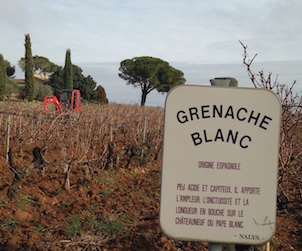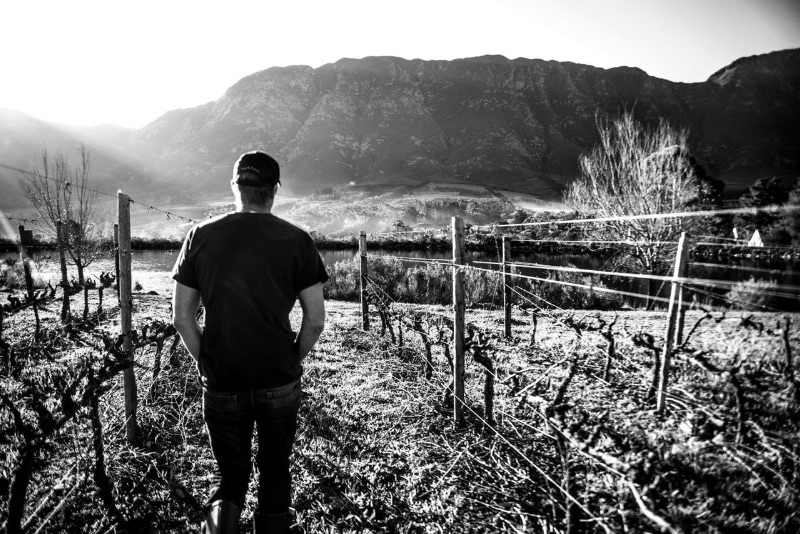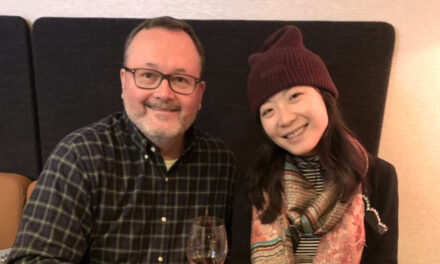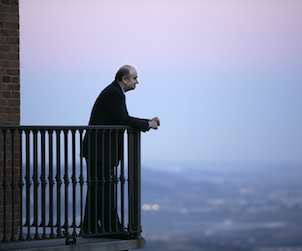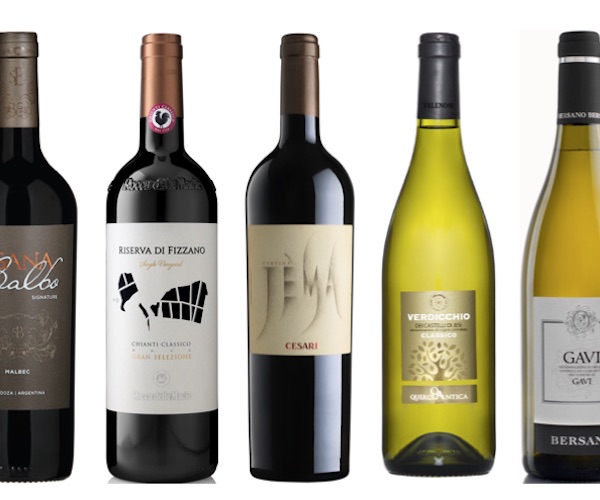Many Châteauneuf-du-Pape producers are experimenting and having fun making white wines.
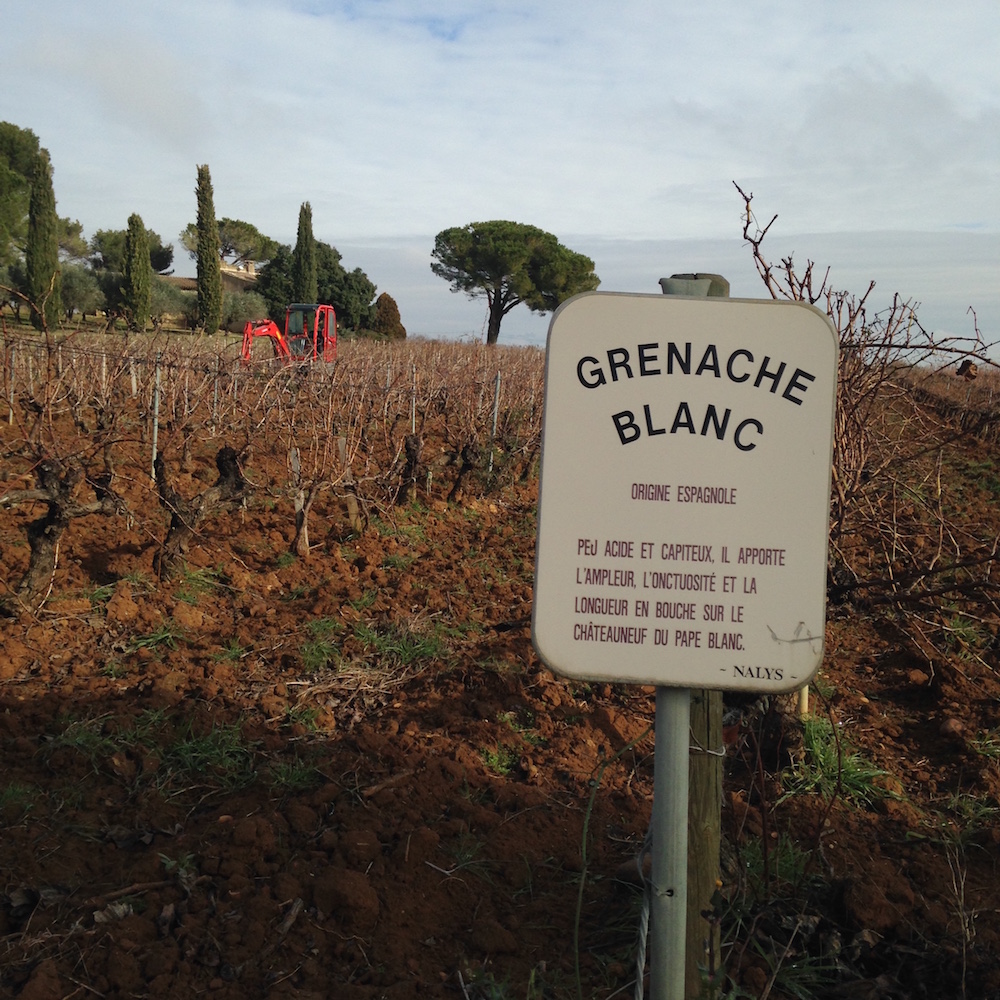
The red wines of Châteauneuf-du-Pape have no trouble finding a market, and a quick review of prices of bottles of C-d-P rouge on the shelves offers an amateur economist a quick lesson on the dynamics of supply and demand. There a lot of people who are very happy to drink the famous Grenache, Syrah and Mourvèrdre blends and the embossed emblem of a papal tiara and the keys of St. Peter assure them a pretty consistent level of quality, which they’ll happily pay a premium for. Much of the success of the Châteauneuf-du-Pape reds can be attributed to the particular conditions of the soils and climate of the small, demarcatted region (more on this in an upcoming post). And much of that success can also be attributed to a history and tradition of modern fine winemaking: Châteauneuf-du-Pape was the first accredited A.O.C. in 1931 and the rules under which the vingerons agreed to make wine have served as a model for the French industry since then.
The American ex-pat sommelier and Southern Rhône wine expert Kelly McAulliffe put to me, and a group of visiting Canadian wine writers last week, a more direct theory of red wine production in Châteauneuf-du-Pape. He said, “You have to try pretty hard to screw up making red wine here.” McAulliffe made his remarks before leading us on a blind tasting of 11 white wines from Châteauneuf-du-Pape at the headquarters of the Fédération des Producteurs in the village of Châteauneuf-du-Pape. White wine from C-d-P is rare: it makes up rouhgly 5-6% of total production. It’s also hard to find, as at least half of it is consumed locally, with much of the rest earmarked for collectors and sommeliers looking for something unique on their lists. McAulliffe’s point was one of contrast: as easy as the hot summers of Provence may be for making red wine, they can be correspondingly difficult for making white. Most producers are content to stick with what they know, and those that choose to make white could be said to be doing in part for the challenge and the sport. Still, as guests of the Fédération, our hosts see enough potential in the development of white wine production in Châteauneuf rto devote a significant amount of our time to tasting and learning about them.
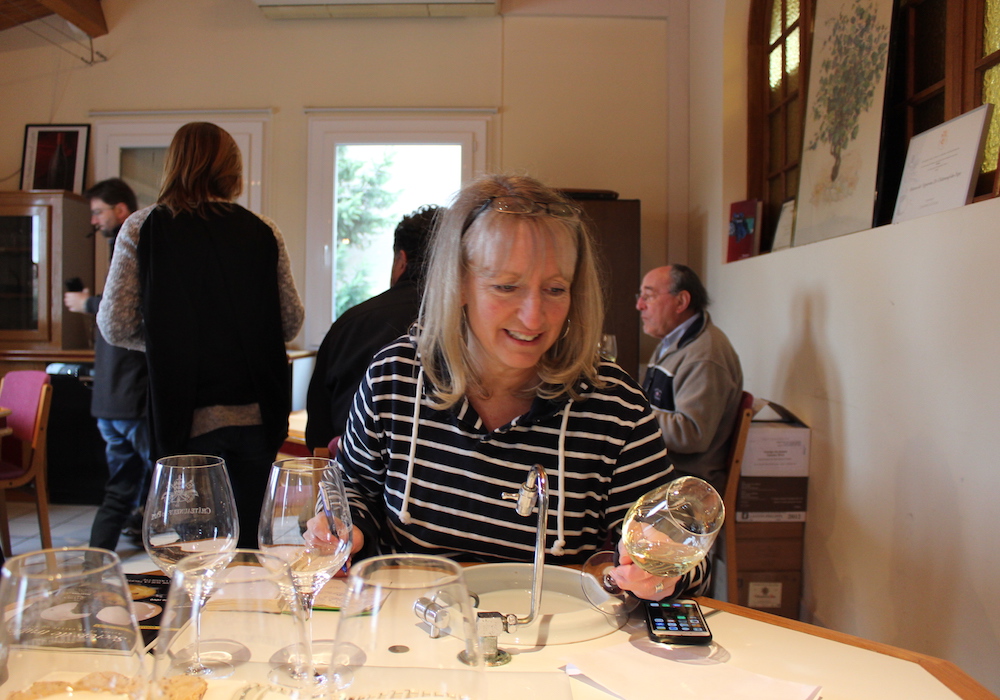
Super sommelière Véronique Rivest, from SOIF Wine Bar in Gatineau, carefully studies a glass of white Châteauneuf-du-Pape.
The rules governing wine production in Châteaneuf allow wine to made from 18 grape varietals: the red grapes Cinsaut, Counoise, Grenache noir, Mourvèdre, Muscardin, Piquepoul noir, Syrah, Terret noir, Vaccarèse (Brun Argenté), and the white(r) ones Bourboulenc, Clairette blanche, Clairette rose, Grenache blanc, Grenache gris, Picardan, Piquepoul blanc, Piquepoul gris, and Roussanne. Grenache blanc, followed by Roussanne are generally the dominant grapes, providing a full bodied, often peachy-friuty core, while Bourboulenc and Clairette and more austere grapes provide balancing acidity. The more technical (and, perhaps, talented) tasters in our group remarked at the diversity of the wines, which were spread over the 2014, 13 and 12 vintages, while my layman’s palate was struck more by the similarity and confluence of style. Most of the wines came up with a big and round spread of fruit and finished with a line of acidity, though a few seemed to reverse that order. The elements more or less remained the same, and where differences depended on terroir (there are three main kinds of soil in C-d-P, which are quite distinct – more on this to come) or technique (acidification is allowed) was unclear.
Later, at a dinner held at the home of Frédéric and Gaëlle Maillet, winemaker and viticulturalist, respectively, at the Vignobles Mousset-Barrot à Châteauneuf-du-Pape, we tried older vintages of C-d-P blanc working back into the early 2000’s, 90’s and 80’s. Older vintages of Châteauneuf-du-Pape white wines exhibit that petroleum note on the nose that is associated with older Rieslings, but that similarity ends on the palate with a richer and mellowed taste.
Châteauneuf-du-Pape chronicler and expert Harry Karis, who joined us at dinner and is known for his exhaustive book on the wineries of the region, explained to us that the white wines of C-d-P are best either a few years from vintage, or a decade or so on. At about five years they go into a sort of dormancy, which can last another five years or so.
Sadly, the white wines of Châteauneuf-du-Pape are pretty much priced on a parallel spectrum to their red cousins. There are no bargains, but they are certainly worth a try.
 Malcolm Jolley is a founding editor of Good Food Revolution and Executive Director of Good Food Media, the company that publishes it. Follow him on Twitter or Facebook.
Malcolm Jolley is a founding editor of Good Food Revolution and Executive Director of Good Food Media, the company that publishes it. Follow him on Twitter or Facebook.

